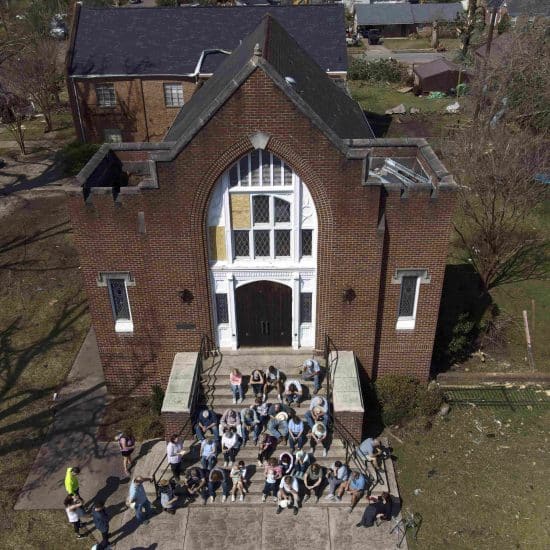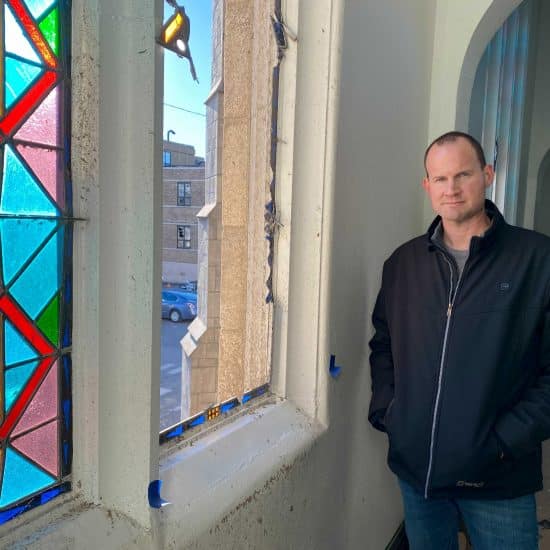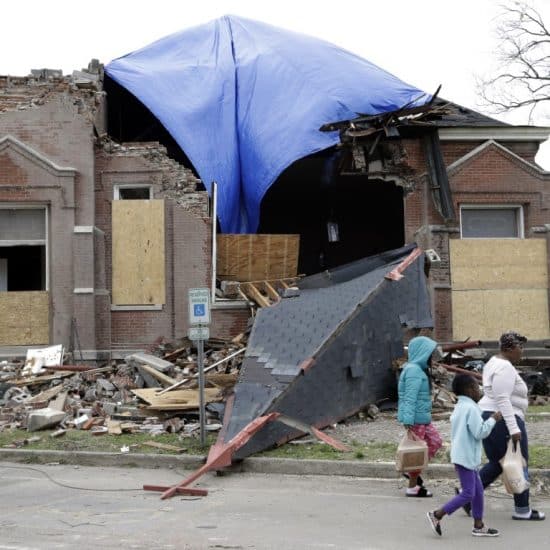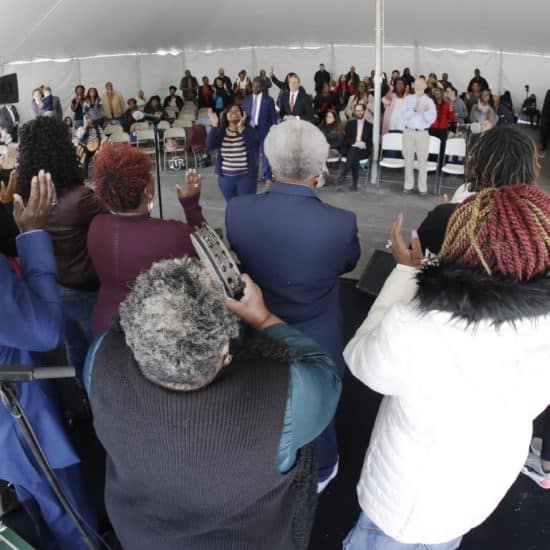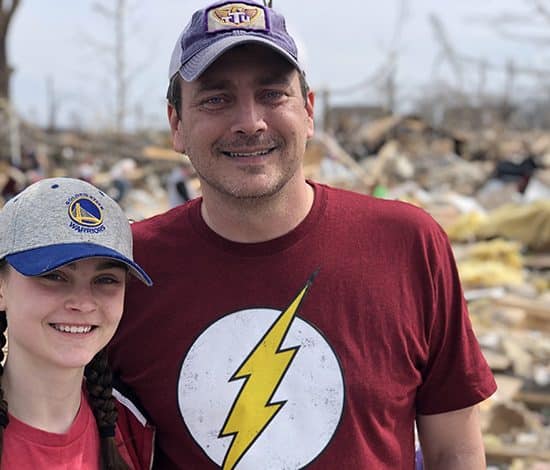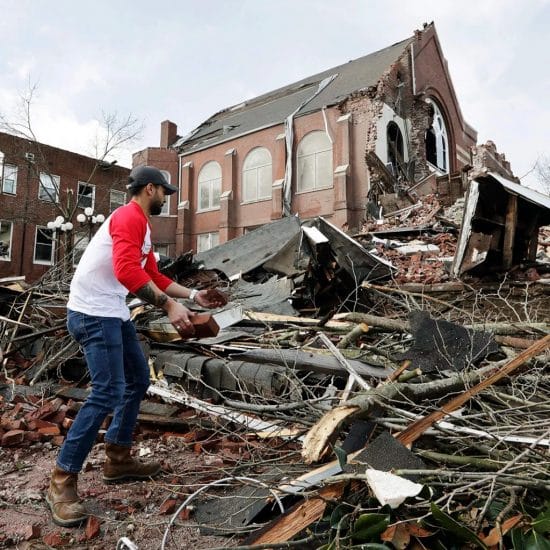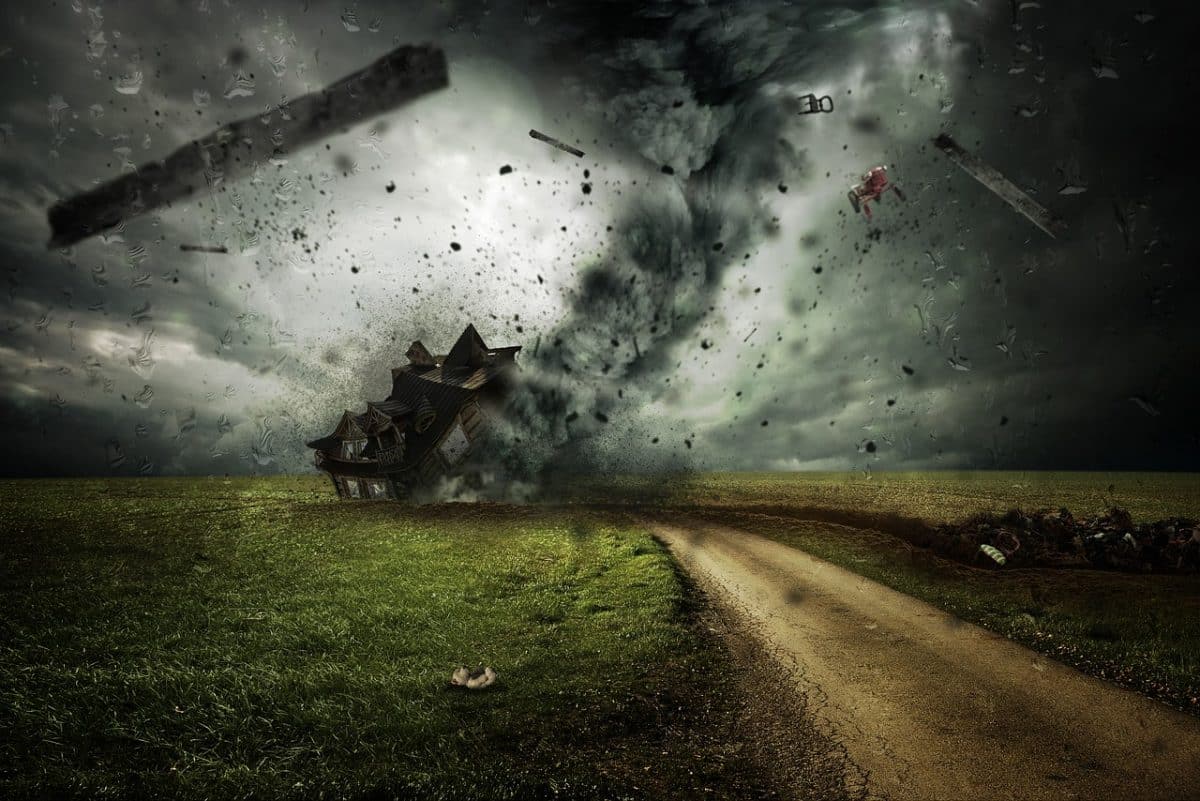
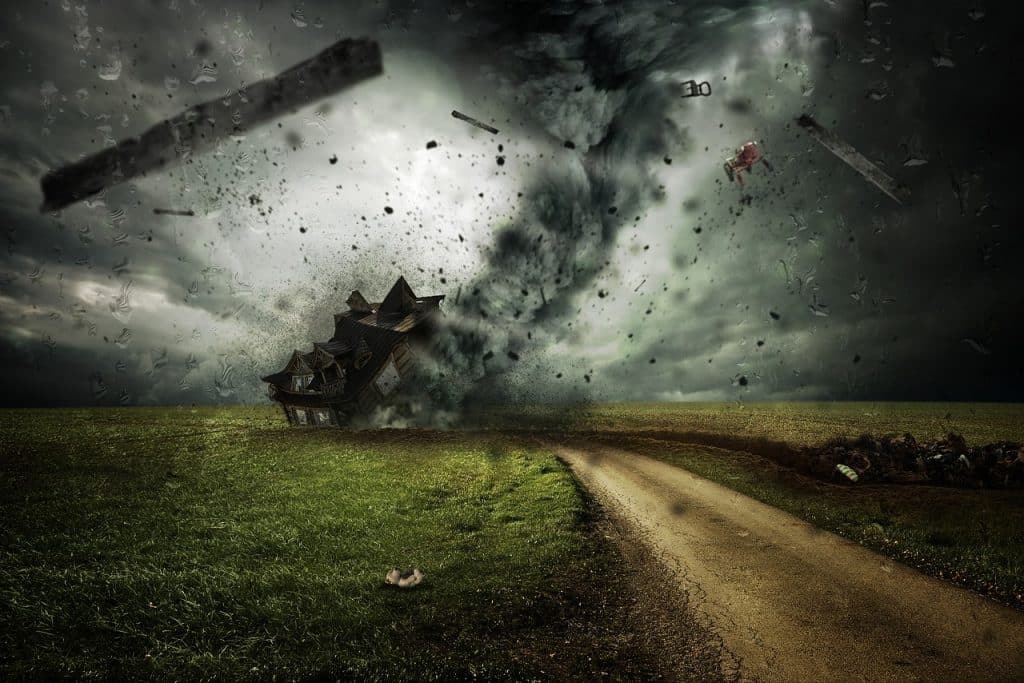
Image by Jonny Lindner from Pixabay
Just when I thought my life was calm, predictable, and manageable, an AF-3 tornado ripped through our city with winds up to 160 mph. So much for the arrogant assumption that we are in charge of our lives. The tornado struck my hometown, Jefferson City, Mo., just before midnight on May 22, lifting debris 13,000 feet into the air. The outpouring of gratitude that no one perished was quickly followed by the numb awareness that entire apartment buildings, homes, businesses, and churches were decimated and scattered like straw.

Doyle Sager
Almost immediately, recovery efforts began. Just as quickly, emails, texts, Facebook messages, and phone calls poured in, wishing us well, sending prayers, offering assistance, and wiring relief funds.
As I reflect on those first post-storm days, several lessons come to mind:
Natural disasters have a way of revealing what is. Poverty, inadequate housing, and economic vulnerability are always there; the storm merely pulls back the façade, exposing existing reality. Natural disasters are multipliers. They intensify and magnify existing struggles.
Those struggling with poverty, people confined to wheelchairs, the mentally ill — all woke up on May 23 with their same pre-existing situations, only multiplied. Those of us who live in an abundance of privilege forget that for many people, life never feels stable. That funnel cloud ripped away what little “normal” they possessed.
Those most impacted by storms must be yoked with a navigator who will stay with them over a sustained period of time. Trauma victims are not capable of taking in all the well-intentioned information coming at them. They feel as if they are drinking from a fire hydrant, attempting to decipher the alphabet soup of helping agencies. Instructions regarding longrange recovery get lost in the immediacy of “Where will we sleep tonight?”
Imagine several thousand people arriving at O’Hare Airport in Chicago, desperately needing to fly to New York City. They have no tickets, no luggage, and no money. What’s more, many of them have never flown before. Such is the world of disaster recovery. Despite efficient and generous relief organizations, the need of the hour is always an incarnational, human presence.
Children are especially susceptible to post-storm trauma. Eighteen months after two Category Five hurricanes hit the U.S. Virgin Islands, reports indicate some elementary students are still experiencing cognitive impairment, anger, and confusion. Children experience life very concretely, so the absence of routine and ritual is a great stressor. “Mommy, why are we living in this motel? Daddy, where is my favorite doll?”
Children are visual learners. The May 22 tornado scattered enough debris to fill 1,600 dump trucks. If that scene is intimidating to an adult, imagine its impact on a child.
Watching faith communities come together is a beautiful thing. Fortunately for our city, both Christian and interfaith relationships are deep and strong. On the Sunday after the storm, we gathered for a community prayer service. We prayed, cried, encouraged, and worshipped. Deep trust among people of faith is not something you can go out and buy the day after a tornado strikes; it must be in place ahead of time.
Suffering builds compassion muscle. Let’s face it. Sustained attention to a single tragedy is difficult when we are exposed to weekly disasters. But when we live through a tornado, we join a reluctant fellowship of sufferers. Sobered by life’s fragility, we pray more earnestly, give more generously, and listen more carefully to the pain of others.
The tornado reminded me how much I love my church and city. I was seven hours away from home the night destruction hit Jefferson City. Early the next morning, when I learned the awful news, something stirred deep within me. I wanted to be with my people. I cut short my meeting and started driving.
The following Sunday, I shared with my congregation the scripture which kept playing in my head all along the interstate: “God is in the midst of the city; it shall not be moved; God will help it when the morning dawns” (Psalm 46:5).
As I prepared to preach that first Sunday after the tornado, I was struck by the Bible’s many references to storms and floods. And then I realized: Those images provide the best metaphor for life’s unexpected and debilitating events. They also offer us God’s best promises.
James Martin, a Jesuit priest and author, reports that in his work as a spiritual director, the story of Jesus calming the storm (in Mark 4:35-41) is often the most helpful biblical text (Martin, Jesus: A Pilgrimage). Life’s storms always leave us changed; our faith response will determine whether or not they leave us better.
Doyle Sager is lead pastor of First Baptist Church in Jefferson City, Mo.

